Raised garden beds are becoming more and more popular. But despite having certain advantages, raised garden beds might not be ideal for some plants as they have many disadvantages too.
Raised garden beds are only suitable for some gardens because they dry out fast, have limited space, are costly, and require frequent watering. While growing the crops in the ground, the roots have much better space to expand, but in smaller raised beds, the space gets confined.
The disadvantages are not limited to these. Many other factors pose disadvantages. And in this article, I will discuss every disadvantage of raised garden beds to help you to decide whether they are good for your garden or not.
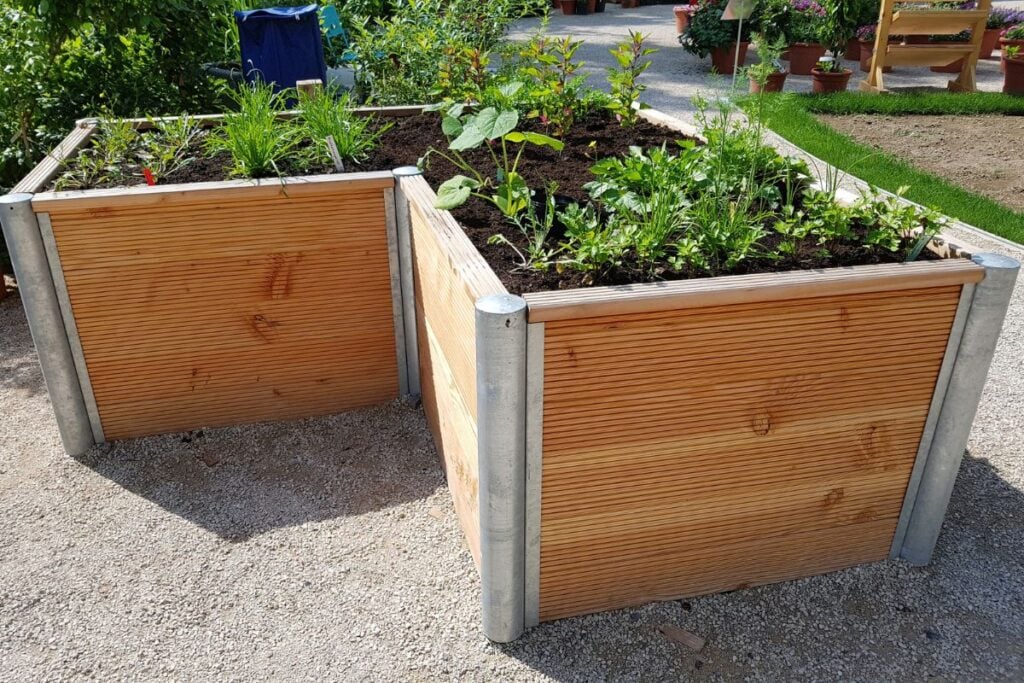
What is a raised garden bed?
The raised garden bed is a form of gardening where the soil is raised high above the ground level and is usually surrounded by thick walls.
Raised bed walls can be made of rock, wood, concrete, metal, and other materials and can be of any shape and size.
The soil usually contains compost and potting soil and is rich in organic matter.
The main aim of a raised bed is to provide a deep, wide growing place in the soil that encourages roots to grow deep and wider.
What are the disadvantages of raised garden beds?
Let’s discuss all the possible drawbacks of raised garden beds.
1. Costly to build
Setting up a raised garden bed requires a lot of investment.
The raised bed’s material cost is high, including timber, metal, bricks, good quality soil, and infill, with an extra cost like nails, straw bales, etc., especially if you want to build deep and tall raised beds.
To reduce cost, you can use recycled timber and homemade compost, but for those who don’t have their compost or don’t have any resources or skills to build their own raised garden bed, this can be a huge drawback.
2. Expensive to buy ready-made ones
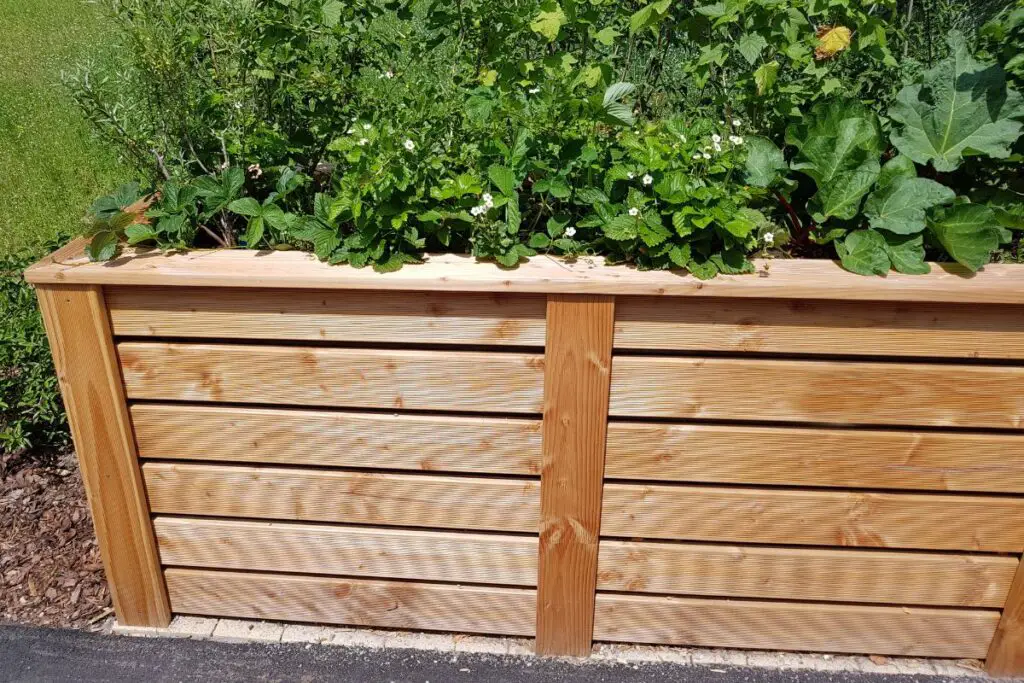
If you don’t have any resources, skills, and compost of your own, then the only option is to purchase a ready-made raised garden bed.
There are a lot of materials you can choose from, such as metal, steel, plastics, wood, etc., which come with a huge price.
Even if you want to purchase a normal square-sized raised bed like 120 cm, which is 12 inches high without including a base, it can cost up to $100, which can vary depending on the place.
This could be a problem if you plan to get a huge-sized raised bed for your garden.
3. Needs some basic tools and skills
Building your raised garden bed will require basic tools, hard work, and muscle.
You will have to do proper calculations to build and design the raised beds, and according to that, you will need to purchase the right amount of timber and other materials.
If you are very new to this and don’t have any handy skills, it can be challenging to build your own raised garden bed.
You must check the tutorials on building and designing a raised garden bed first and understand everything thoroughly.
Looking for gardening supplies? We have tested 100's of products before recommending them to you guys. Check out our best pick below:
| Image | Gardening Supplies | Best Price? |
|---|---|---|
 Top
Top Top
Top | Raised Garden Bed Kit | Check On Amazon |
 | XLUX Soil Moisture Meter, Plant Water Monitor, Soil Hygrometer Sensor for Gardening, Farming, Indoor and Outdoor Plants, No Batteries Required | No Results |
 Top
Top Top
Top | 82 Pcs Garden Tools Set and Extra Succulent Tools Set | Check On Amazon |
 | Joeys Garden Expandable Garden Hose with 8 Function Hose Nozzle, Lightweight Anti-Kink Flexible Garden Hoses, Extra Strength Fabric with Double Latex Core, (50 FT, Black) | No Results |
 Top
Top Top
Top | Dual Chamber Compost Tumbler | Check On Amazon |
 Top
Top Top
Top | Sunnyglade Plant Stakes | Check On Amazon |
 Top
Top Top
Top | Organic Cold Pressed Neem Seed Oil | Check On Amazon |
 Top
Top Top
Top | Mighty Mint Gallon :-Insect and Pest Control Peppermint Oil | Check On Amazon |
 Top
Top Top
Top | Scotts DiseaseEx Lawn Fungicide | Check On Amazon |
 Top
Top Top
Top | Jacks Classic 20-20-20 All Purpose Fertilizer | Check On Amazon |
 Top
Top Top
Top | 30,000 Seeds Pollinator Attracting Wildflower Mixture | Check On Amazon |
 Top
Top Top
Top | Survival Vegetable Seeds Garden Kit-Over 16,000 Seeds | Check On Amazon |
4. Requires time to build
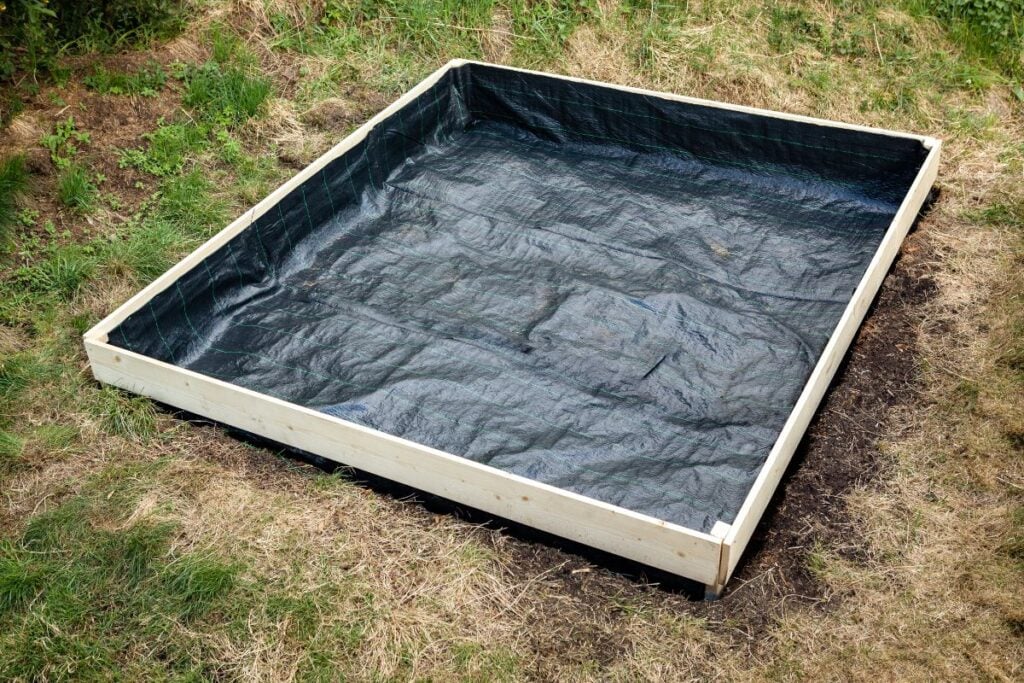
The basic disadvantage of raised garden bed is that it requires a lot of time to plan, execute, and set up.
Compared to in-ground gardening, the raised bed requires a lot of time to set up until and unless you are well-organized and skilled at carpentry.
If you plan to start instant gardening without giving it any time, then raised bed gardening is unsuitable for you as it needs a lot of time and patience to build.
5. Difficult to prepare
Raised beds are very difficult to prepare as they require more labor than machines.
In the case of in-ground gardening, you can use a rototiller because of free space, which is impossible to use in raised beds, making it very difficult to do with your hands.
If you plan to build a taller raised bed rather than a simple one, it becomes more complicated and requires proper preparation guidelines.
6. Mostly for permanent construction
Once you construct a raised bed, it becomes very difficult to change the layout and move it to some other locations.
If you want to move the location of your raised bed, you will need to dismantle the boxes that have been standing for years and dig out all the soil from the bed to level up the ground evenly again.
If you consider building a raised garden bed, you need to remember that you can’t frequently change the locations as they are fixed in one place.
If your mind changes quite often, you should get an easy gardening life instead of a complicated one.
7. Requires frequent watering
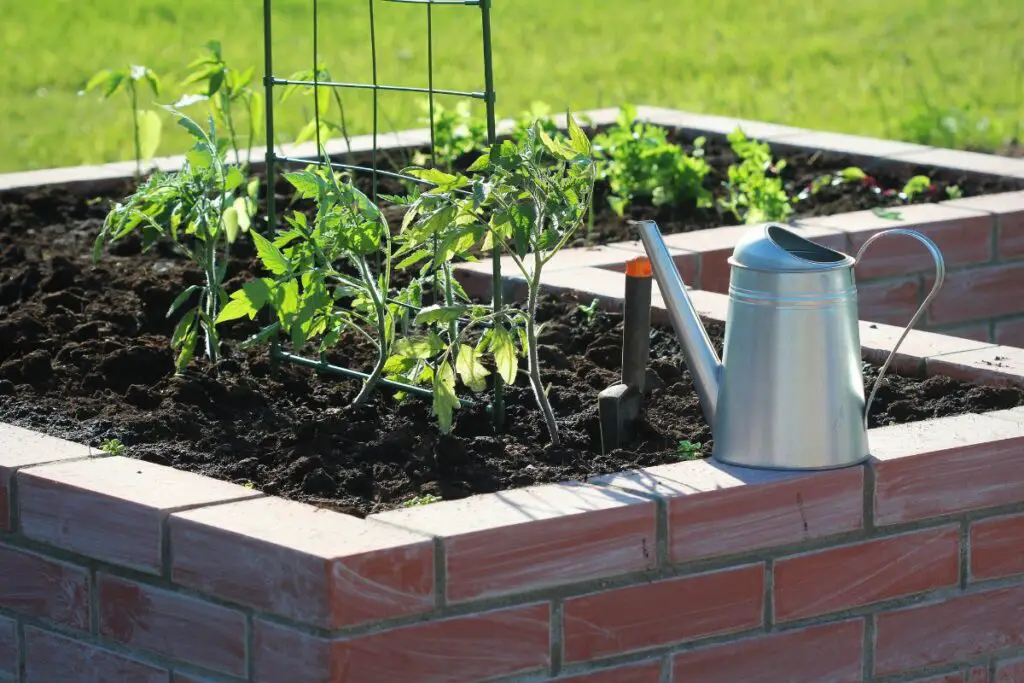
Raised beds dry out much faster, especially during full sun exposures.
So, garden plants and veggies require frequent watering to keep them hydrated.
Also, you need to invest extra in an irrigation system to provide raised beds with water.
If you frequently forget to water, maintaining proper watering won’t be easy.
8. More prone to pests and diseases
As the soil remains compact with limited airflow inside the soil and tighter spacing, the plants become more prone to pests and diseases in the raised beds.
Many common pests can attack your raised beds, such as aphids, whitefly, mealybugs, thrips, cutworms, fungi gnats, etc.
You need to check your raised garden beds for pests frequently and if you notice anything, then take immediate action to remove them.
9. Limited space and shapes
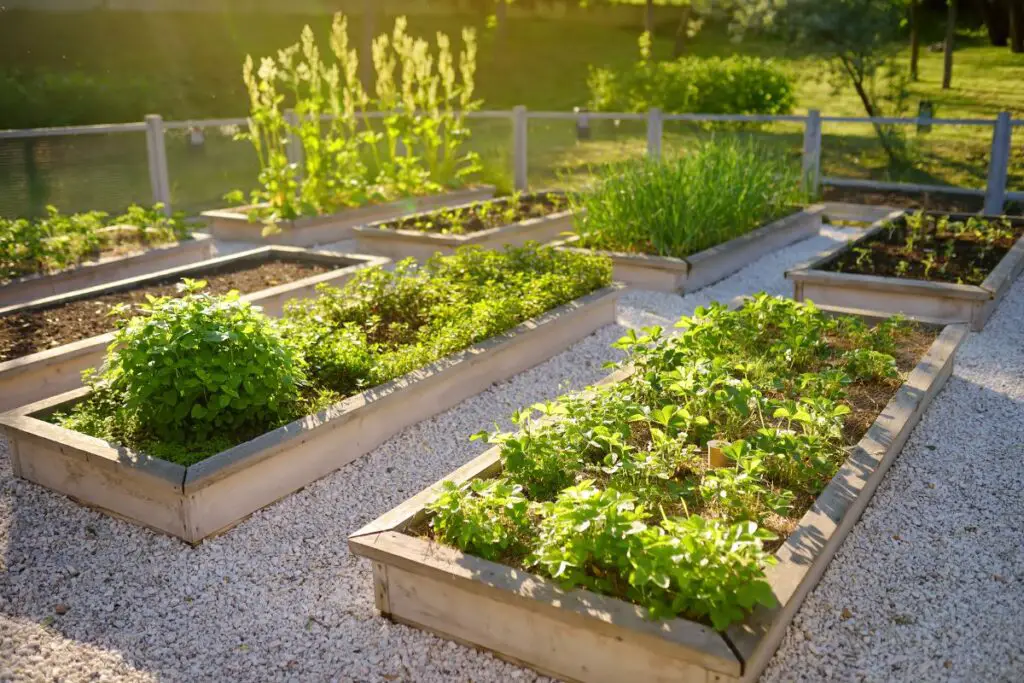
The plant generally has limited space to grow in a raised garden bed.
In comparison, in-ground gardening has no borders and can be easily reshaped in the way you like.
You cannot reshape your raised bed when it is built until and unless you are very good with your tools and handy skills.
If you want to add more space to your raised bed, it is impossible to construct everything again once it is already in a particular shape.
10. Poor air circulation
As in raised beds, there is limited space, so the soil remains compact, due to which most crops grow in tighter spacing.
This creates poor air circulation into the soil.
The tight soil and poor air circulation can also restrict the root growth of some crops, like tomatoes, that can extend extremely deep into the soil.
While in the case of in-ground gardening, the soil stays loose and well-distributed with good airflow, which is suitable for most crops.
11. Dries out much faster
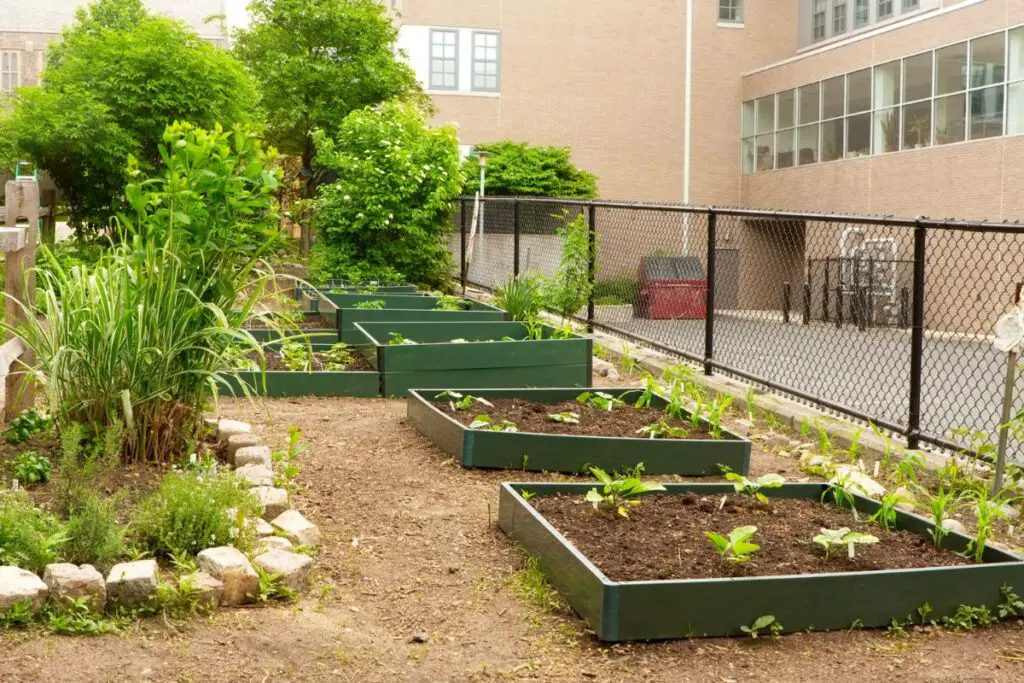
Raised beds can dry out much faster than in-ground gardening.
There are many reasons behind the soil drying out quickly.
First, the soil in a raised bed is much warmer than in-ground beds, which increases the evaporation rate.
The warmer the soil, the more it will get evaporated.
Second, the higher the soil is raised, the more quickly it will dry, especially during the summer.
Third, if the sides are made of wood in your raised garden bed, the water can evaporate through the sides, especially when it is softwood.
This is known as the osmotic process.
When the sun’s rays are extremely strong, it dries out all the moisture in the wood, and then the wood starts to absorb moisture from the soil, making it completely dry.
If the raised bed is too tall, then it is better to use plastic inside the side of the woods to prevent quick dryness.
12. Continuous drainage decreases nutrients in the soil
Generally, raised garden bed has a good drainage system, so the water drains out much faster than at a normal rate.
It means the nutrients and minerals drain out every time you water the raised bed, leaving the soil nutrition less.
As the soil can lose nutrients, you will have to frequently renew it by adding soil amendments to keep it healthy and rich.
13. Regular maintenance
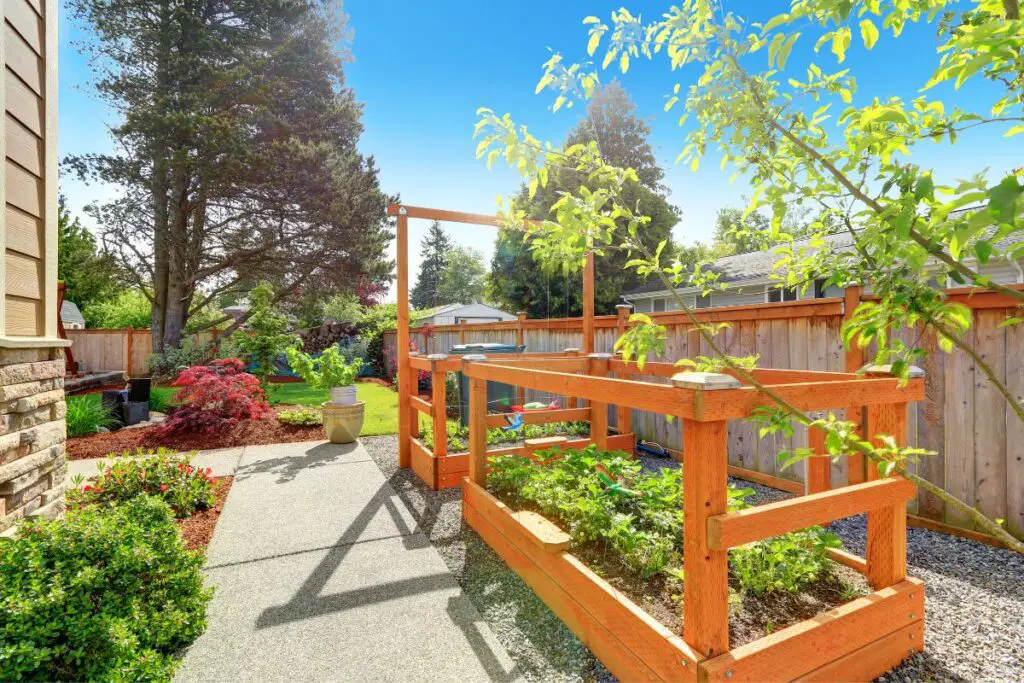
Regular maintenance is required to keep your raised garden bed healthy.
To maintain the soil quality, add compost and amendments every spring and cover the soil during the off-season.
You must water the crops regularly to keep them healthy, so proper irrigation is required.
You should also spray the soil with pesticides every month to avoid pest infestations.
But once you are habituated to all the basic maintenance, it will not be a big issue.
14. Few crops require more spacing
Some crops are not well suited to raised garden beds as they need more spacing.
Crops like potatoes and cereals need more space than other crops, which hardly a raised garden bed can provide.
Even if you want to plant such crops in a raised bed, they will hardly grow because of tighter spacing.
Each crop has different requirements, so if you find out that some crops are unsuitable for raised beds, it is better to plant them directly in the garden.
15. Materials need to be replaced from time to time
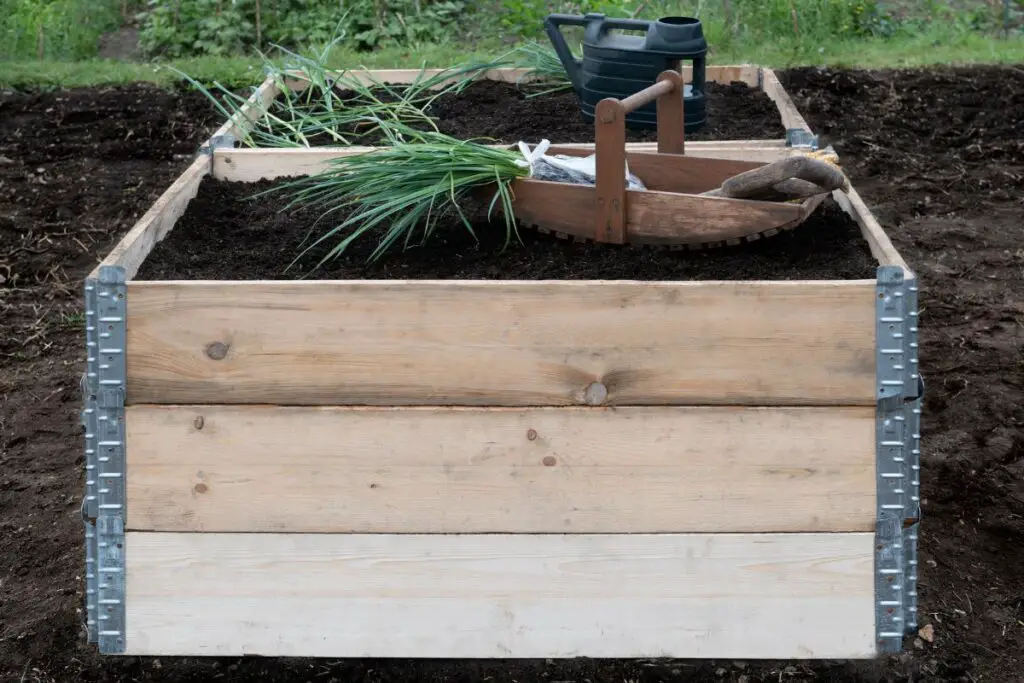
One big disadvantage is that the materials of raised beds don’t last forever, and you should replace them over time.
It doesn’t matter if you use good quality timber, metal, or galvanized iron.
With time, everything gets damaged or decayed.
Even plastic can get cracked and brittle over time.
Wooden raised beds need frequent maintenance after 3-4 years.
But if you are using untreated or recycled timbers, the complete replacement should be done with a new one every 5 to 6 years.
But when you use bricks and stones raised beds, then it lasts much longer than the wooden ones.
The normal time of replacement of materials is 5 years.
After that, everything starts to decay or wear out.
In-ground garden vs. Raised beds: Differences
| In-ground garden | Raised beds |
|---|---|
| The soil stays on the ground. | The soil is raised above the ground. |
| Affordable, and no extra investment is needed. | Expensive and requires a lot of investment. |
| It is environmentally sustainable. | It is not environmentally sustainable. |
| Requires low maintenance and doesn’t need to be watered frequently. | High maintenance and frequent irrigation are required. |
| Not important to purchase commercial garden soil as the native soil is already well-draining and rich in nutrients. | It’s important to buy raised bed soil for a raised garden bed. |
| Soil stays moist for a longer period. | Soil dries out much faster than a normal rate. |
| Unwanted garden weeds are very common. | Raised beds are mulched and properly tilled, which makes them less vulnerable to garden weeds. |
| Garden soil doesn’t have good drainage. | Raised bed soil is usually well-draining. |
| In-ground gardening is not a permanent structure. | The raised bed is a permanent construction. |
| The in-ground garden is flexible, with unlimited space. | Raised bed garden is not at all flexible and has very limited space. |
| It lasts forever. | It doesn’t last forever as the raised bed materials decay with time. |
Final words
Before considering getting a raised bed garden, it’s better to take some time and research everything about it. The raised garden bed has many drawbacks, but that doesn’t mean it is not good for growing veggies and plants.
If the raised bed has disadvantages, it has many advantages too, making it suitable for many crops. Both raised beds and the in-ground garden are beneficial and suitable for growing plants.
Before deciding, do proper research and gain as much knowledge as possible to make a wise decision.
Reference: ScienceDirect, American Society of Agronomy, Noble Research Institute, Soil for Raised Beds, Raised Bed Gardening.

